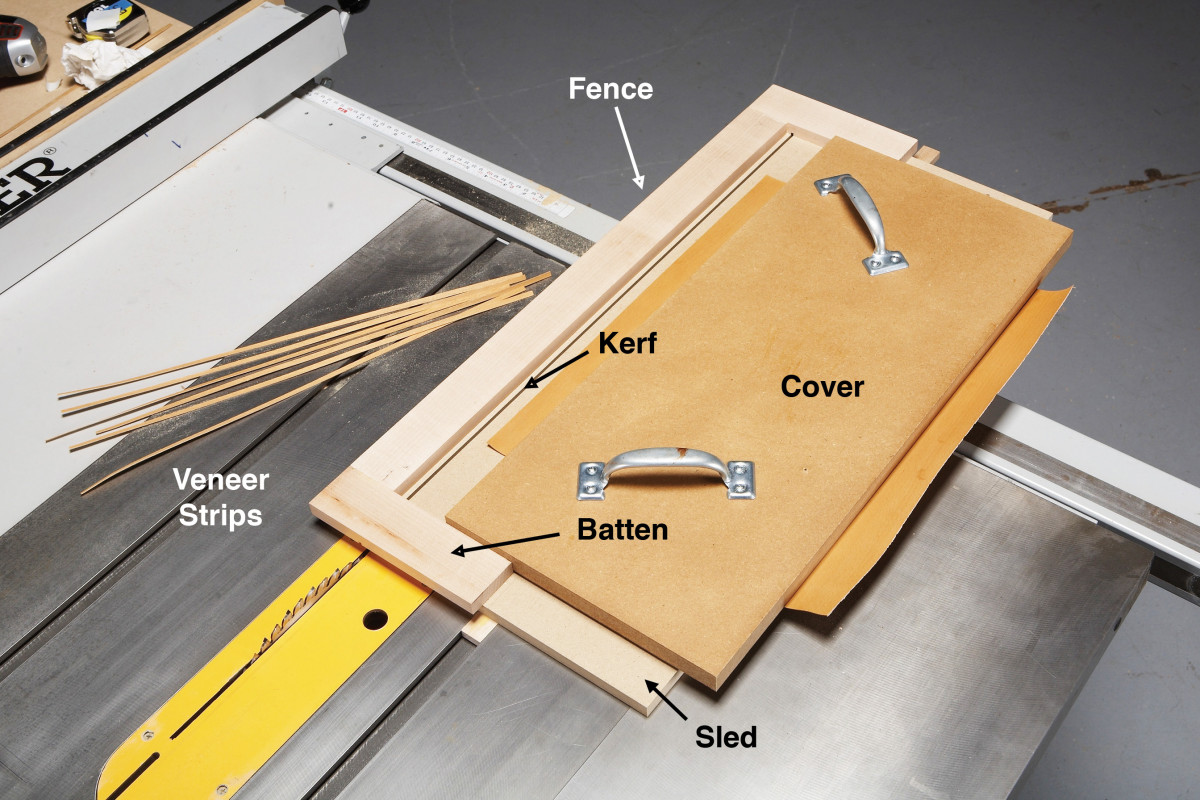We may receive a commission when you use our affiliate links. However, this does not impact our recommendations.
 This sled allows me to cut the 1/8-in.- wide strips of veneer that I often use for inlays. I can cut strips all day without having to measure or reposition the saw’s fence. The sled consists of a 13-in. by 24-in. piece of 1/2-in. MDF with a hardwood runner attached to the bottom. Battens and a fence are glued to the top. The fence is parallel to a saw kerf that runs the length of the sled.
This sled allows me to cut the 1/8-in.- wide strips of veneer that I often use for inlays. I can cut strips all day without having to measure or reposition the saw’s fence. The sled consists of a 13-in. by 24-in. piece of 1/2-in. MDF with a hardwood runner attached to the bottom. Battens and a fence are glued to the top. The fence is parallel to a saw kerf that runs the length of the sled.
After attaching the runner and the 1/2-in.-thick battens, I made a cut with the blade height set at 5/8-in., to create the kerf without sawing through the battens. Then I attached the fence 1/8- in. from the kerf.
To use the sled, I set the blade at 5/8- in. and install the sled’s runner in the miter slot. I position a piece of veneer flush against the fence, secure it with a 3/4-in. MDF cover and make the cut. –Jennifer Hammill
Here are some supplies and tools we find essential in our everyday work around the shop. We may receive a commission from sales referred by our links; however, we have carefully selected these products for their usefulness and quality.










I’m a novice and I may not be seeing this jig correctly. I’m confused about the fence and how you got it equal distance 1/8″ away from the kerf cut before attaching the fence. Wouldn’t the fence be free from the sled after making the kerf cut? Did you use just glue or did you also use screws? Do you have a exploded view of the jig?
The battens hold the fence on- as long as the blade isn’t raised too high they’ll stay attached. This type of article is more of a suggestion, giving you inspiration or ideas to create your own things.